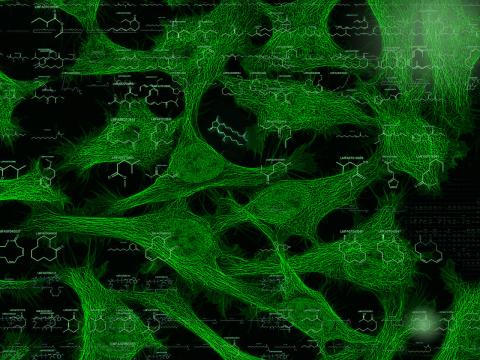Main Article by Sayuri Miyamoto; Adriano B. Chaves-Filho; Alex Inague; Isabella F.D. Pinto; and Marcos Y. Yoshinaga
Lipids are at the core of cell's metabolism, serving as signaling molecules as well as backbones of membranes and energy warehouses. They play key roles in maintaining normal cellular homeostasis and are now being increasingly recognized in diverse biological processes. On the other hand, abnormal lipid metabolism and lipid structural modifications induced by reactive oxygen species are involved in the pathogenesis of several human diseases, such as obesity, diabetes, cancer, and neurodegenerative diseases. Reading the molecular messages contained in cellular fat deposits is critical to deepen our understanding of cell's physiology that ultimately governs its phenotype.
“why are there so many lipids?” There are currently around 43 thousand unique lipid structures annotated in the Lipid Maps Structure Database, which is the largest public lipid database in the world. Because lipids' concentrations in cells may vary several orders of magnitude, quantification of this myriad of molecules has been deemed the ultimate bottleneck in lipid research. Here, the central question is: “why are there so many lipids?” originally posed by William Dowhan in 1997, and revisited by the same author in 2017 [1]. That is, what is the role of the astounding diversity of lipids found in different cells, organelles and tissues? What can they tell us about cellular “health” status? What are the messages hidden in their structures?
Thanks to technological advances in mass spectrometry we are currently witnessing increasing numbers of studies devoted to large-scale description of cell's lipidome (so called lipidomics). For instance, the lipidome of a reference human blood plasma sample was recently analyzed by 31 laboratories worldwide using diverse mass spectrometry-based techniques [2]. This crucial inter-laboratory study revealed not just a total of 1,527 unique lipid structures identified, but also that only 20% of them (339 lipids) were reported by more than five laboratories. The many hundreds of lipids measured in human body fluids such as blood plasma have a huge potential for biomarker discovery in precise medicine. However, there are still several analytical challenges to be addressed by mass spectrometry: appropriate data processing, reproducibility and inter-laboratory cross-validation are central to the future of lipidomics [3].
From bacteria to humans, lipids and their metabolites are central integrators of many cellular functions. Cells are surrounded by an interface (the lipid bilayer) that separates the cell interior from the environment. In addition, most organelles are also delimited by lipid bylaier membranes of distinct compositions. This lipid bilayer plays many essential roles from ionic barrier to intracellular/intercellular signaling. Thus, it is not surprising that even minute changes in environmental stimuli (light, heat, nutrients, stress, etc.) lead to significant remodeling of membrane lipid composition, which in turn can have tremendous impact on cellular function. For example, the ability to adjust membrane fluidity according to temperature changes is often attributed to the regulation of membrane fatty acid desaturation and chain length.
Furthermore, fatty acids, in particular those containing more than one unsaturated bond (polyunsaturated fatty acids, PUFA), are highly susceptible to modifications promoted by specific enzymes and/or reactive oxygen species (ROS). Oxygenases such as lipoxygenases and cyclooxygenases, enzymes that are typically activated under inflammatory conditions, convert polyunsaturated fatty acids (e.g. arachidonic or docosahexaenoic acids) into a series of oxygenated (mono- or poly-hydroxylated) compounds, collectively known as eicosanoids and docosanoids. Non-enzymatic lipid oxidation can be promoted by reactive radicals (e.g. hydroxyl, alkoxyl and peroxyl radicals) and non-radical species (e.g. singlet oxygen and ozone) and produces a multitude of oxygenated, cyclized and chain-cleaved products. Several oxygenated fatty acids, phospholipids, glycerolipids (triacylglycerol and diacylglycerol) and steroids (cholesterol) have been characterized and together they comprise the oxylipidome.
Oxygenated polyunsaturated fatty acids are examples of signaling molecules that can act as key regulators of cell inflammatory and anti-inflammatory responses. Interestingly, studies usually associate oxygenated compounds formed from omega-6 fatty acids as pro-inflammatory, whereas those derived from omega-3 fatty acids as anti-inflammatory. Oxidized lipid species are also increasingly reported to exert multi-functional roles in the coordination of cellular metabolism, differentiation and cell death pathways. For example, accumulation of phospholipid hydroperoxides (specifically the phosphatidylethanolamine hydroperoxides), associated with inefficient detoxification by Glutathione peroxidase 4 (GPX4), drives cells to a special type of cell death named ferroptosis [5]. On the other hand, the generation of cardiolipin hydroperoxides is reported to drive cells to apoptosis [4]. Moreover, some oxidized lipids can stick to proteins, changing their structure and function. This type of modification may not only turn on or off important signaling pathways [6], but can also promote protein aggregation [7], a hallmark of some neurodegenerative diseases.
Thus, there is an emerging concept that oxygenated lipids represent a rich signaling language that still needs to be deciphered [4].
Yet the complexity of the oxylipidome makes its precise and quantitative determination a huge challenge. Simplifications to understand such complex language can be made by hydrolyzing the oxidized PUFA esterified to phospholipids, glycerolipids or steroids. This is one of the strategies used by various groups. However, to precisely understand the oxylipidome, efforts towards analytical developments are required to detect and quantify specific oxidized lipid molecular species in their native form.
the code for deciphering lipids is widely open Unlike DNA and proteins, the code for deciphering lipids is widely open. The characterization and quantification of lipid structures in diverse biological systems have opened a Pandora´s box for lipidomics. A clear challenge is linked to the integration of biochemical lipidomics with chemical biology and other “omics” sciences (e.g. genomics, transcriptomics, proteomics and metabolomics) to unravel the flow of information encoded in biological systems. Our efforts and hopes are to continue untangling the messages embedded in the fat deposits. We believe that the future of lipid research belongs in part to those who can learn to read these molecular messages, in particular their application in life sciences, industrial settings and medicine.
Further readings:
- W. Dowhan. Understanding phospholipid function: Why are there so many lipids? Journal of Biological Chemistry, 292(26): 10755–66, 2017 | doi: 10.1074/jbc.x117.794891
- J. A. Bowden, A. Heckert, C. Z. Ulmer, C. M. Jones, J. P. Koelmel, L. Abdullah, L. Ahonen, Y. Alnouti, A. M. Armando, J. M. Asara, e. al. et al.. Harmonizing lipidomics: NIST interlaboratory comparison exercise for lipidomics using SRM 1950–Metabolites in Frozen Human Plasma Journal of Lipid Research, 58(12): 2275–88, 2017 | doi: 10.1194/jlr.m079012
- K. Simons. How Can Omic Science be Improved? Proteomics, 18(5-6): 1800039, 2018 | doi: 10.1002/pmic.201800039
- Y. Y. Tyurina, I. Shrivastava, V. A. Tyurin, G. Mao, H. H. Dar, S. Watkins, M. Epperly, I. Bahar, A. A. Shvedova, B. Pitt, e. al. et al.. “Only a Life Lived for Others Is Worth Living”: Redox Signaling by Oxygenated Phospholipids in Cell Fate Decisions Antioxidants & Redox Signaling, 29(13): 1333–58, 2018 | doi: 10.1089/ars.2017.7124
- I. Ingold, C. Berndt, S. Schmitt, S. Doll, G. Poschmann, K. Buday, A. Roveri, X. Peng, F. Porto Freitas, T. Seibt, e. al. et al.. Selenium Utilization by GPX4 Is Required to Prevent Hydroperoxide-Induced Ferroptosis Cell, 172(3): 409–22.e21, 2018 | doi: 10.1016/j.cell.2017.11.048
- J. R. Poganik, M. J. C. Long, Y. Aye. Getting the Message? Native Reactive Electrophiles Pass Two Out of Three Thresholds to be Bona Fide Signaling Mediators BioEssays, 40(5): 1700240, 2018 | doi: 10.1002/bies.201700240
- L. S. Dantas, A. B. Chaves-Filho, F. R. Coelho, T. C. Genaro-Mattos, K. A. Tallman, N. A. Porter, O. Augusto, S. Miyamoto. Cholesterol secosterol aldehyde adduction and aggregation of Cu,Zn-superoxide dismutase: Potential implications in ALS Redox Biology, 19: 105–15, 2018 | doi: 10.1016/j.redox.2018.08.007
Sayuri Miyamoto, Adriano B. Chaves-Filho, Alex Inague, Isabella F.D. Pinto, and Marcos Y. Yoshinaga,
from Chemistry Institute, University of São Paulo, Brazil


Add new comment